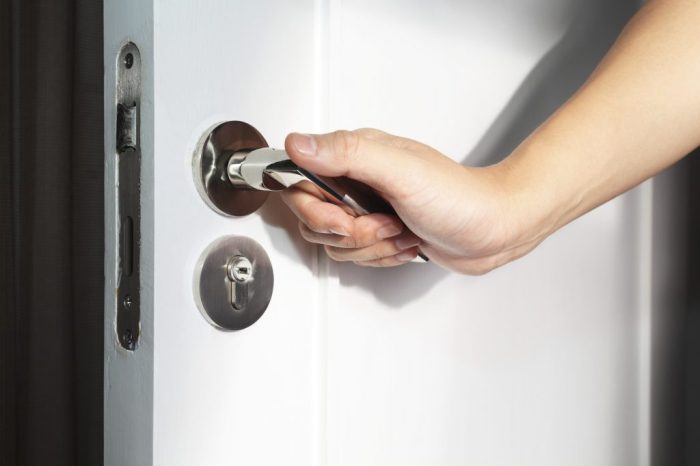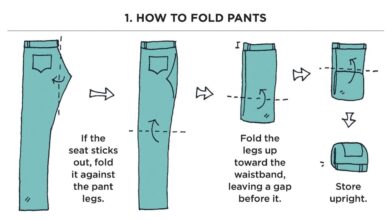
Opening a Door When Your Hands Are Full: Solutions and Innovations
Opening a door when your hands are full is a common problem we all face, from juggling groceries to carrying a heavy suitcase. This seemingly simple act can become a frustrating obstacle, leading to wasted time and even safety concerns.
Imagine trying to navigate a crowded hallway with a full shopping basket, only to find yourself struggling to open a door. Or picture yourself arriving home after a long day, your arms laden with packages, and realizing the front door won’t budge without an extra hand.
These scenarios highlight the daily inconvenience and potential hazards associated with this seemingly mundane task.
This blog post explores the traditional and innovative solutions available to tackle the challenge of opening doors with full hands. We’ll delve into the effectiveness and limitations of common methods, examine emerging technologies that simplify door opening, and discuss the importance of accessibility and inclusivity in design.
The Problem
We’ve all been there: hands full, door closed, and a sudden urge to get through. This seemingly simple act of opening a door can become a frustrating obstacle course when you’re juggling multiple items. The inconvenience of a closed door with full hands can lead to a domino effect of problems, ranging from wasted time and frustration to potential safety hazards.
Everyday Scenarios
The scenarios where we find ourselves with hands full and a door to open are surprisingly common. Imagine you’re returning home from grocery shopping, carrying multiple bags of groceries, or perhaps you’re rushing to a meeting with a laptop, files, and a coffee in hand.
In these situations, opening a door with your hands full can be a real challenge. Here are some everyday items that could make opening a door difficult:
- Grocery bags
- Briefcases or laptop bags
- Shopping bags
- Heavy boxes or packages
- Trays with plates of food
- Tools or equipment
- Children’s toys or belongings
Consequences of a Closed Door
Not being able to easily open a door with full hands can lead to various inconveniences and even potential safety concerns:
- Wasted time:Fumbling with a door handle while juggling multiple items can significantly increase the time it takes to enter or exit a room or building. This can be especially problematic in situations where time is of the essence, such as catching a bus or attending a meeting.
- Frustration:The struggle to open a door with full hands can be incredibly frustrating, especially when you’re already feeling rushed or stressed. This can lead to a sense of helplessness and annoyance, potentially impacting your mood and productivity.
- Safety concerns:In some cases, the inability to open a door quickly can pose a safety risk. For example, if you’re carrying a heavy object and need to get through a door quickly to avoid a potential hazard, struggling with the door handle could put you in danger.
Traditional Solutions: Opening A Door When Your Hands Are Full
When faced with the universal dilemma of having full hands and a door that needs opening, humans have ingeniously devised a range of solutions. These methods, passed down through generations, utilize the body itself as a tool, employing various limbs and maneuvers to achieve the desired outcome.
Using Body Parts
The most common approach is to use a body part to manipulate the door handle or latch. This involves employing a foot, elbow, shoulder, or even a hip to achieve the desired action.
- Using the Foot:This technique involves pushing the door open with the foot, typically by placing the toe or instep against the door handle or latch. It’s generally effective for lighter doors, but can be awkward and potentially damaging to the door or handle, especially with heavier doors.
- Employing the Elbow:This method involves using the elbow to press the door handle or latch. While effective for some individuals, it can be difficult to reach the handle with sufficient force, especially for those with limited mobility or height. It also can lead to discomfort or injury, particularly for individuals with pre-existing elbow conditions.
You know that feeling when you’re juggling groceries, keys, and your phone, and you’re desperately trying to open a door? It’s like trying to find the perfect pairing for a sweet strawberry – you need something that complements, not overpowers.
That’s where the magic of strawberries meet basil comes in. Just like a dash of basil elevates the flavor of strawberries, sometimes a simple solution can make all the difference when you’re trying to open a door with full hands.
- Leveraging the Shoulder:This method involves using the shoulder to push or pull the door open. It is generally effective for heavier doors but requires considerable upper body strength and can lead to shoulder strain or injury, especially if the door is particularly heavy or resistant.
Innovative Approaches
While traditional solutions like using your elbow or shoulder to open doors can be effective, they’re not always practical or convenient. Thankfully, modern technology and design have brought forth innovative approaches that make opening doors with full hands a breeze.
Automatic Door Openers
Automatic door openers are a common sight in public spaces like shopping malls and airports. These systems use sensors to detect approaching individuals and automatically open doors, eliminating the need for manual operation.
- Types:Automatic door openers come in various forms, including sliding doors, swing doors, and revolving doors.
- Operation:They typically rely on sensors like infrared or motion detectors to trigger the opening mechanism.
- Advantages:Automatic door openers offer convenience, accessibility for individuals with disabilities, and improved hygiene by reducing the need to touch surfaces.
Touchless Entry Systems
Touchless entry systems utilize advanced technologies like RFID, Bluetooth, or facial recognition to grant access without physical contact.
- Operation:These systems use a variety of methods to identify authorized users, such as proximity cards, mobile devices, or facial recognition.
- Advantages:Touchless entry systems enhance security, improve hygiene, and provide a convenient and hands-free experience.
- Examples:Keyless entry systems for vehicles, smart locks for homes, and access control systems for offices are examples of touchless entry systems.
Door Handles with Integrated Levers
Door handles with integrated levers offer a simple and efficient solution for opening doors with full hands.
You know that feeling when you’re walking towards a door with both hands full of groceries, and you’re just hoping you can manage to get it open? That’s when you realize the true power of a good elbow nudge, or even a well-timed hip bump! It’s amazing how we adapt to these little inconveniences.
Speaking of adapting, I recently discovered this awesome fa la la la li lash product that makes applying mascara a breeze, even when your hands are full. It’s like a little magic trick that makes life just a bit easier, and that’s always a good thing, right?
Anyway, back to the door-opening dilemma, I’m pretty sure I’ve perfected the art of the grocery bag-assisted door open. It’s all about finding the right balance, and a little bit of finesse, of course.
- Operation:These handles feature a lever mechanism that allows users to open the door with a simple push or pull motion, eliminating the need for twisting or turning.
- Advantages:They are user-friendly, accessible, and provide a smooth and effortless opening experience.
- Examples:Many modern homes and buildings incorporate door handles with integrated levers, making them a widely adopted design feature.
Safety Considerations
While innovative door-opening solutions offer convenience, it’s crucial to prioritize safety to prevent injuries or property damage. Unconventional methods can pose risks, so careful consideration and responsible implementation are essential.
Safety Features for Innovative Door Opening Solutions
Designing and using innovative door opening solutions require careful consideration of safety features. These features aim to minimize potential risks and ensure user safety.
- Strength and Durability:The chosen materials and construction techniques should be robust enough to withstand the forces involved in opening the door. This includes ensuring the mechanism can handle the weight of the door and any potential impacts. For instance, a device that utilizes a lever should be made of strong, durable materials to prevent breakage under stress.
- Ergonomics and User Interface:The design should prioritize user comfort and ease of use, minimizing strain and potential for injury. The device should be intuitive to operate, with clear instructions and visual cues. For example, a lever-based device should have a comfortable grip and be positioned at a height accessible to users of varying heights.
- Fail-Safe Mechanisms:Incorporating fail-safe mechanisms can prevent unintended consequences. For example, a device using a magnet to unlock a door should have a backup mechanism to prevent the door from becoming permanently locked in case of power failure.
- Safety Sensors:Integrating sensors to detect obstacles or potential hazards can enhance safety. For instance, a sensor could detect a person’s hand in the path of the door’s opening mechanism, preventing injury.
Safe Door Opening Practices
Regardless of the method used, adhering to safe practices is essential. These practices help minimize the risk of injury or property damage.
- Assess the Situation:Before using any unconventional method, carefully assess the situation. Ensure the environment is safe and free of obstacles that could interfere with the door opening process. This includes ensuring sufficient space around the door to avoid potential collisions.
- Use Proper Technique:Employ the appropriate technique for the chosen method, ensuring smooth and controlled movements. Avoid sudden or forceful actions that could lead to injury or damage. For example, when using a foot to open a door, apply steady pressure to avoid kicking the door too hard and potentially damaging the door or surrounding area.
We’ve all been there, arms laden with groceries, keys in hand, desperately trying to open the door. It’s those moments that make you appreciate the simple things, like a free hand. But what about those times when you want to show your appreciation to your neighbors?
For a little holiday cheer, check out these 31 neighbor Christmas gift puzzles for some creative inspiration. Maybe next time you’re struggling with a door, a neighbor will be there to lend a hand, thanks to your thoughtful gesture.
- Be Mindful of Surroundings:Maintain awareness of your surroundings during the door opening process. Be mindful of potential hazards, such as traffic, pedestrians, or objects that could be damaged by the door. For example, if opening a door with a foot, ensure that no one is standing behind the door and that there are no fragile objects in the vicinity.
- Practice Caution:Always err on the side of caution. If unsure about the safety of a particular method, choose a safer alternative. If using a tool or device, ensure it is in good working condition and use it according to the manufacturer’s instructions.
Accessibility and Inclusivity

The ability to easily open doors is a fundamental aspect of daily life, often taken for granted. However, for individuals with disabilities or limited mobility, this seemingly simple task can present significant challenges. Designing door opening solutions that are accessible to everyone is crucial for promoting inclusivity and ensuring equal opportunities.
The Impact of Door Accessibility on People with Disabilities
Accessibility in door design is vital for people with disabilities. Individuals with mobility impairments, such as those using wheelchairs or walkers, may find it difficult to reach traditional door handles or push heavy doors. People with visual impairments may rely on tactile cues or auditory signals to navigate, and doors that are not designed with these considerations in mind can be challenging to locate and open.
- Wheelchair Users:Wheelchair users need doors with sufficient clearance to allow for easy passage. Automatic door openers, lever handles, and doors that open outward are essential for accessibility.
- People with Visual Impairments:Tactile markings on door handles and contrasting colors can help people with visual impairments identify and open doors. Auditory cues, such as audible door chimes or door closers, can also be helpful.
- People with Cognitive Disabilities:Simple, intuitive door mechanisms and clear signage can enhance accessibility for individuals with cognitive disabilities.
Inclusive Door Design Solutions, Opening a door when your hands are full
Designing door opening solutions that cater to a wide range of physical abilities is essential for creating truly inclusive environments. Here are some examples of inclusive door designs:
- Automatic Door Openers:Automatic door openers, often found in public buildings and commercial spaces, eliminate the need for manual operation, making doors accessible to people with a wide range of abilities.
- Lever Handles:Lever handles are easier to grasp and operate than traditional knobs, particularly for individuals with limited hand dexterity or grip strength.
- Push Plates:Push plates, often found on doors that open outward, allow users to open doors with a simple push, eliminating the need for pulling or turning handles.
- Tactile and Visual Cues:Tactile markings on door handles and contrasting colors can help people with visual impairments identify and open doors.
- Accessible Doorways:Accessible doorways should have sufficient width to accommodate wheelchairs and other mobility devices, and the threshold should be level with the surrounding floor.
Future Directions

The quest to seamlessly open doors with full hands is an ongoing journey, fueled by innovation and a desire for greater accessibility. Emerging technologies and design concepts hold the promise of revolutionizing this seemingly mundane task, making it effortless and inclusive for everyone.
The Rise of Smart Doors
The future of door opening might be significantly different from what we are accustomed to. Imagine a world where doors anticipate your needs and respond accordingly. Smart doors, equipped with advanced sensors and AI, could detect your approach and automatically unlock, eliminating the need for manual interaction.
- Facial Recognition:Doors could identify you based on your facial features, unlocking only for authorized individuals. This would enhance security and streamline access for residents and employees.
- Gesture Control:Imagine waving your hand or using a specific gesture to open a door.
This technology, already employed in some smartphones, could be integrated into doors, making them accessible to people with limited mobility or those carrying heavy objects.
- Biometric Authentication:Doors could utilize fingerprint scanning, iris recognition, or other biometric methods to verify your identity and grant access.
This would enhance security and eliminate the need for keys or cards.






